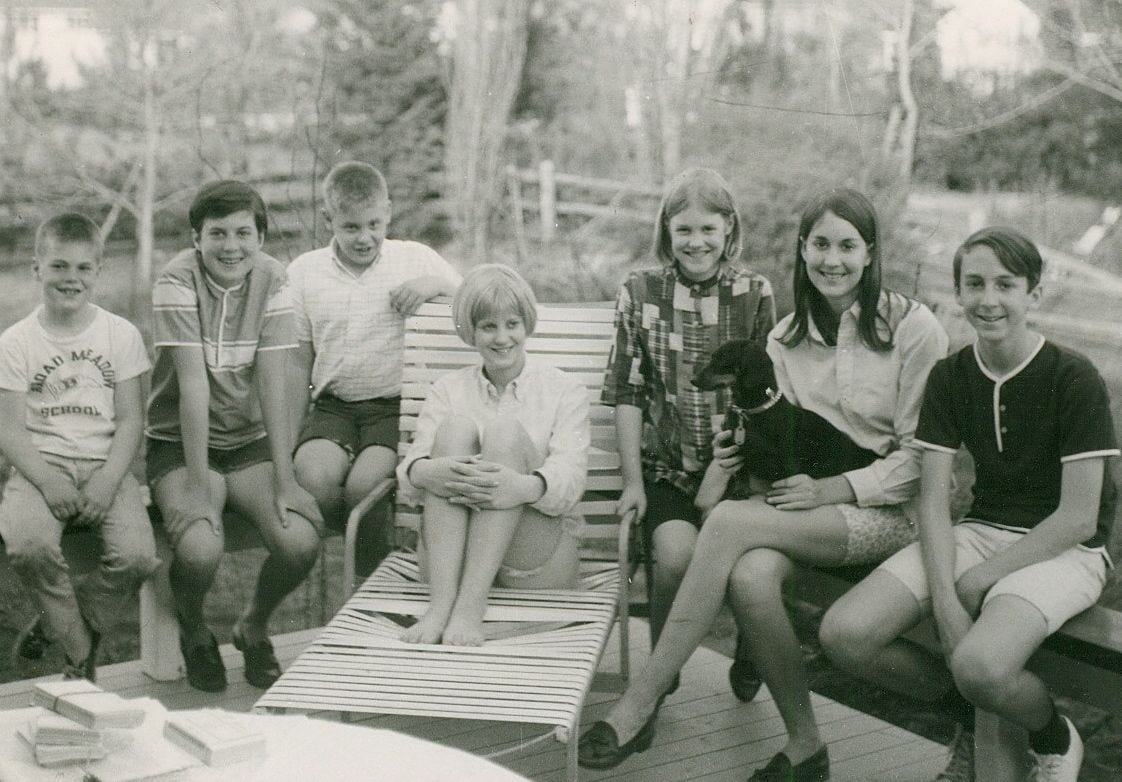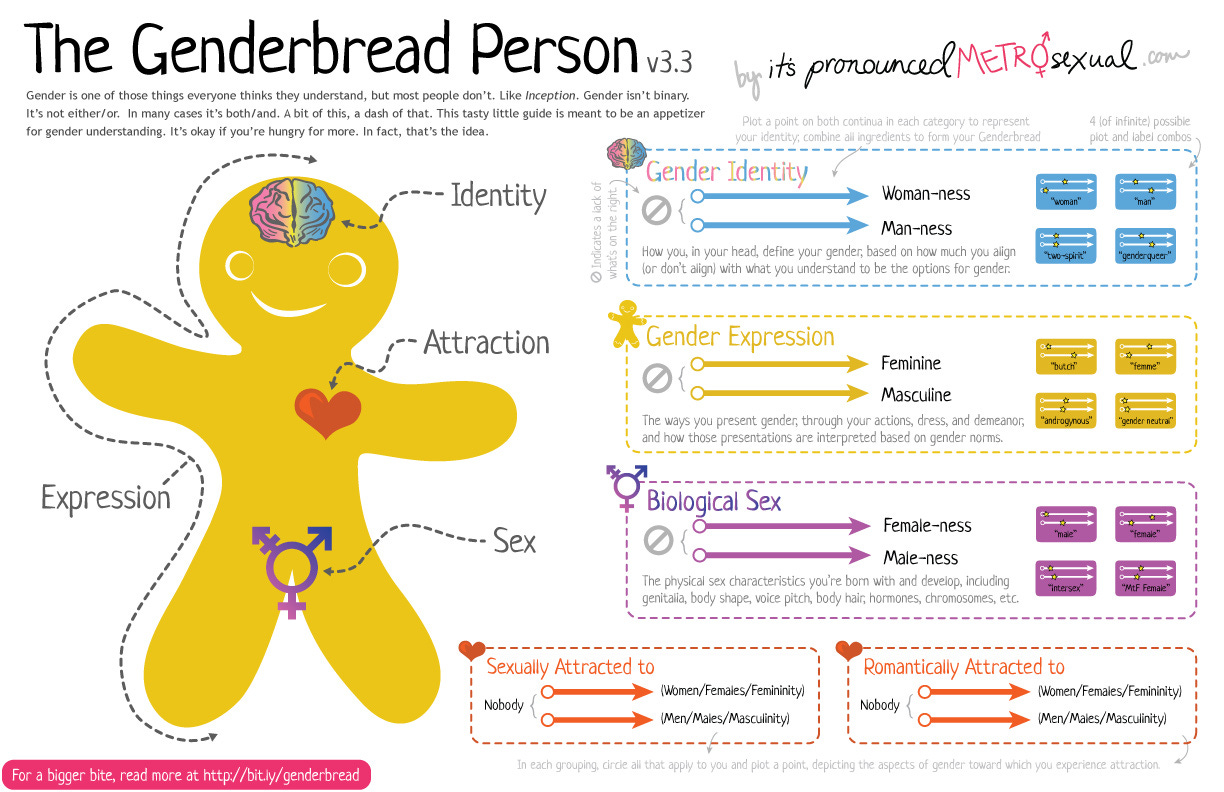Hi friends and welcome newcomers!
When a friend saw this family photo, she couldn’t find me. “Second from left,” I told her.1
“I thought that was a boy,” she said. Surprised, I polled Facebook friends. About one-third saw me as a boy.2
Those perceptions surprised me because despite my short hair, outfielder position with hands on knees, and shirt the same style as my brother’s (far right), I was never mistaken for a boy in real life. I never wanted to be a boy. Fortunately, I escaped childhood without anyone suggesting that I should or could be. But when I consider what might have happened to me — and what’s happening to children — I’m aghast.
Girls Who Reject Femininity Are Now Considered Trans
If I were growing up now, I’d be labeled transgender. Gender nonconformity — defying traditional sex-role (also called gender-role) expectations — is now included in the “umbrella definition” of transgender: “persons whose gender identity, gender expression or behavior does not conform to that typically associated with the sex to which they were assigned at birth.”3
If I were growing up now, I might conclude, given my “masculine” interests, from basketball to blue jeans, that I must be a boy. I’d see misleading charts like The Genderbread Person, below, which asks kids to decide where they fit on a scale from “woman-ness to man-ness” and maleness to femaleness.
I would study perplexing graphics,4 wondering why male and female seem on par with agender and gender fluid. And why is “female” — half the population — so small?
Then, thoroughly confused, I might try to persuade family, friends, and teachers that I’m “really” or “deep down” male or nonbinary.
Nonbinary is the most popular option5 among girls these days — and girls now comprise the majority of trans-identified people after “an explosion” of trans-identifying girls in past decade. I suspect “nonbinary" originally connoted androgyny (a mix of traditionally masculine and feminine traits, and I’m all for that) but nonbinary is now defined as neither male nor female — or both — which is simply incorrect.6 In Irreversible Damage, The Transgender Craze Seducing Our Daughters, explains that a nonbinary status allows girls to “opt out” of womanhood.
This muddling of gender (a feeling) and sex (a fact) can have drastic consequences.
If I were a kid nowadays, I might take puberty blockers and cross-sex hormones; undergo a double mastectomy; and suffer through other permanent disfigurements to “affirm” a new identity — despite Hillary Cass’ comprehensive 2024 review of the literature: There is “remarkably weak evidence” that social transition, hormonal transition, or surgical transition have any positive effect on gender-nonconforming children.
Incredibly, even some “nonbinary” teens get surgeries. Surgeons now reconstruct bodies in all sorts of ways and “will work with you to create a plan specific to your needs.”7
Confused About Basic Biology
I respect everyone’s right to “gender nonconform.” Look at my photo; how could I not? I respect adults who identity as transgender. It’s today’s kids hopping aboard the popular trans train and getting confused about their actual sex — female or male — that concerns me.
Feminism Saved Me
Fortunately, grownups just called me a tomboy, which sounded like an accusation: “You’re doing girlhood wrong.”
Adults just mildly harassed me by asking, as I grew into my teen years, “When are you going to outgrow this tomboy phase and become a lady?”
Never, as it turned out.
Instead, I outgrew the tomboy phase and became an athlete.
I still look just like that photo,
and other lifelong friends joked on Facebook. My hair: the same length. My clothes: still comfortable. My body language: still ready to catch a ball if it soars in my direction.It was feminism that saved me. At Stanford, while studying under the pioneering psychologist Sandra Bem, feminism taught me that sex-role stereotypes are restrictive and sexist. Feminism validated my desire to make decisions according to my own preferences, regardless of those “typically associated with the sex” I was “assigned at birth.”8 Inspired by my professor, I naively hoped we might soon eliminate sex-role stereotypes forever.
I was wrong.
Pictured, left to right: Cousin Tommy, me, cousin Jimmy, cousin Beth, cousin Marianne, sister Carol, dog Chloe, brother Peter.
Facebook friends provided robust and wide-ranging commentary (thank you all) including surprising speculations about whether my brother Peter (far right) might be a girl. He’s not. Same for cousin Marianne. Boy? No. “[Sex is] not an easy guess when u are looking at kids,” wrote Nancy Fuller. “Nor should it be!” Good point.
This definition is from the American Psychological Association. Other organizations, from the Human Rights Campaign to the American Psychiatric Association to The Centers for Disease Control and Prevention to the Endocrine Society, define transgender in almost identical ways. All include gender-nonconforming behavior. Thanks to
for pointing this out.This one appears numerous places online but I could not find any attribution.
Wikipedia lists more than 100 gender identities; Gender Wiki lists more than 3,000. If only these could be called personality types. Or Hogwarts Houses. Or games people enjoy as they’re finding themselves. No body modifications or special pronouns would be needed.
What about Differences of Sexual Development (DSD)? Like other human genetic anomalies, these are rare genetic variations on male or female bodies. They are not a third sex. The only true intersex condition — ovotesticular disorder — has occurred in only about 500 documented cases ever, worldwide. For an excellent unbiased explanation of DSDs and the role of sex and gender in society, see Doriane Lambelet Coleman’s On Sex and Gender, Simon & Schuster, 2024.
Physicians do not assign sex. They determine sex based on external genitalia. If the genitals are ambiguous, they conduct other tests.








Yep. Thought we had this figured out in the ‘70s with “Free to Be - You and Me.” Sad to see how much we’ve regressed since then.
I rejected feminine trappings until my late teens, and at thirteen (1977) I was still trying not to "like boys" because a lot of boys at school were not nice to girls. I was barely aware how much I looked like a boy because of my clothes and hair, and I wasn't "confused." I just needed to keep growing and feel more comfortable among my peers. I've been thinking about the same thing you write about: If I were eleven-twelve-thirteen now, I'd think I was nonbinary, or someone would possibly suggest that I was. THAT would be confusing. "Maybe I'm not a girl": the thought of how insecure that would have made me in myself, makes my blood run cold.